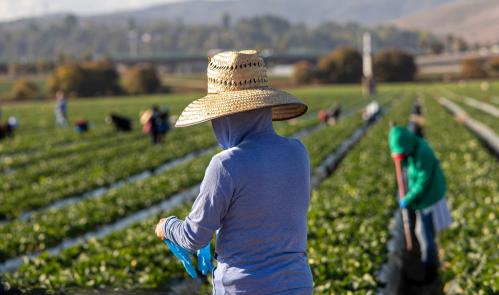Below is a viewpoint from the USMCA Forward 2022 report, which examines key priorities to build a more competitive, inclusive, and sustainable North American economy.
 In the midst of a horrific pandemic, the USMCA’s coming into force flew almost entirely under the radar.
In the midst of a horrific pandemic, the USMCA’s coming into force flew almost entirely under the radar.
It is indicative, perhaps, of a change in the mindset of North America’s political economy. Our world looks different today than it did during the blustery presidency of Donald Trump. Today, the entire precept of globalization is facing heavy criticism, and for good reason: Footloose capital built more profitable, but highly vulnerable, global supply chains.
Despite being a largely status quo agreement, the USMCA managed to break new ground by rewriting the labor conditions of trade.
For the first time ever, workers in North America–the collateral damage of “rationalized” continental supply chains–have tools to meaningfully deal with abhorrent worker conditions; the same conditions, ironically, that manifested because of free trade.
Unlike NAFTA, which treated workers’ rights as a “nice-to-have” (but strictly voluntary), the USMCA brings labor protections into the core text of the agreement. As a result, governments can now file formal disputes in order to resolve alleged violations like other provisions in the deal.
Under USMCA, new approaches to labor are reason for hope. The question heading into 2022 is whether mobilizing around the rights of workers can transcend the antecedents of profit-driven free trade policy, in a post-pandemic North America.
Emboldened by this change in approach, the Centro de Derechos de los Migrantes (CDM), an NGO promoting migrant labor rights, filed a first petition in March of 2021. The petition claims Mexican women faced systemic discrimination in hiring and employment conditions–a violation of USMCA’s labor provisions.
Added to these new labor protections is a brand new complaint system, known as the Rapid Response Labour Mechanism. This provision targets the most egregious violations of workers’ rights, including the denial of free and fair collective bargaining with severe penalties for corporate rule breakers–up to and including a total ban on cross-border exports. This bolsters labor reform efforts introduced by the Mexican government in 2019.
This new trade provision is proving to be, at least so far, more than just words on paper. In 2021, the U.S. government twice invoked the mechanism to address serious allegations of vote tampering and worker intimidation at U.S.-owned auto plants in Mexico, including a massive General Motors truck complex in Silao. The added pressure placed on firms to maintain decent and fair labor standards, under threat of trade sanction, is emboldening Mexican workers to organize in defense of their rights, mounting legitimate challenges to Mexico’s deeply corrupt and illegitimate “protection” unions.
These are still early days in new North American trade relations, and it is difficult to foretell how effective, or resilient, this surge in labor activism will be.
Strong progressive, political alignment between President Biden, Prime Minister Trudeau, and President Obrador in support of trade union freedoms is unique and positive–but also potentially transitory. A rash of America-first economic policies, under President Biden’s Build Back Better plan, also threatens to upend any political goodwill built up in Post-Trump North America.
Under USMCA, new approaches to labor are reason for hope. The question heading into 2022 is whether mobilizing around the rights of workers can transcend the antecedents of profit-driven free trade policy, in a post-pandemic North America.






Commentary
Bold labor provisions a bright light under new North American trade pact
February 28, 2022